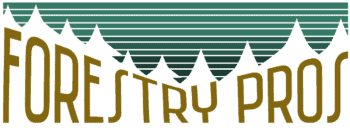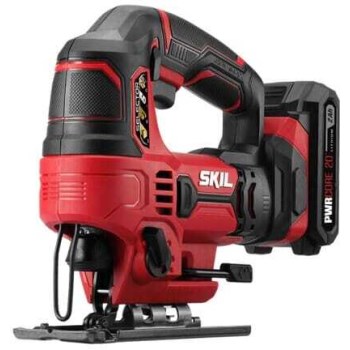- Hookaroon vs Pickaroon - August 8, 2022
- Best 24 Inch Chainsaw Options Guide: Which Is Right For You? - July 16, 2022
- Husqvarna 455 Rancher Review and Guide - May 2, 2022
We remember growing up, trees have always been a part of our life. Be that as a swing in childhood, or a shade to rest, or even a place to meditate.
But, it’s not always the tree that should care for humans, we should be equally responsible for them. Tree identification, their use, and values, their characteristics can be the step we could take to know them better.
This article discusses common forestry tree types and species through data and statistics. We’ll also take a closer look at the most common forestry tree available throughout the world. You’ll know their general characteristics, uses, and distribution. Along with that, we’ll introduce you to some likely used trees in the forestry industry and their general wood guides.
The Forest: A Critical Component of World Biodiversity
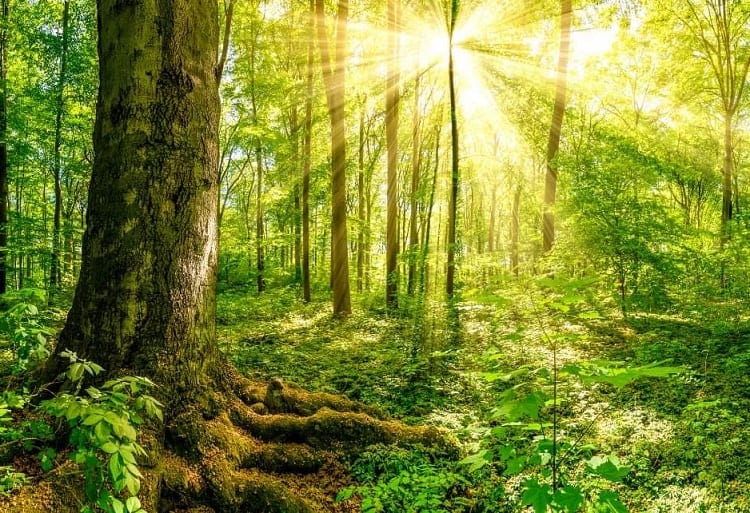
Forests are the home of 80% of life on earth. It covers 31% of the global land area. If you’re ever been to a forest, you’ll notice not only the trees but animals (small or big), various vegetation. Decaying leaves are proof of the presence of microorganisms, which we cannot notice through our eyes.
The secret of this success lies deep to the floor of the forest which balances the towering trunks above. These are the heroes keeping our planet healthy and us alive.
Trees breathe taking off the excess CO2 humans produce and using it to produce healthy fruits, branches, and beautiful landscapes. The roots of trees give the soil the structure to absorb and retain the excess rain. Trees can sequester carbon from the environment, the ability to withstand temperature change, drought hardiness.
All of these are done rooted in a place, unable to speak or reach out and move around. And, we aren’t treating them well.
Forest Distribution Throughout the World
Fig 1: Global distribution of forests showing ten countries with the largest forest area, 2020 (Source: FAO, 2020)
History of Trees
Archaeologists report first land plant got on the land about 400 million years in the Silurians. This was before vertebrates got on land. These all plants resembled ferns or mosses and were small. But, the start of the Carboniferous period (before 360 million years) was the first evidence of trees found.
There are some trees whose appearances haven’t changed much but came from past eras. North American Sequoia (which appeared 160 million years) is a unique link between our past and present. Slender trees continuously reaching the sun, centuries pass, and the trees grow taller and taller.
Trees are having cultural beliefs from past eras. Ficus religiosa (King of Fig trees) has known as the tree under which Lord Buddha is said to have attained enlightenment. People in tropical and subtropical Asia have adopted fig trees as a symbol of power and places of prayers.
What Defines a Tree? What Categorizes Them?
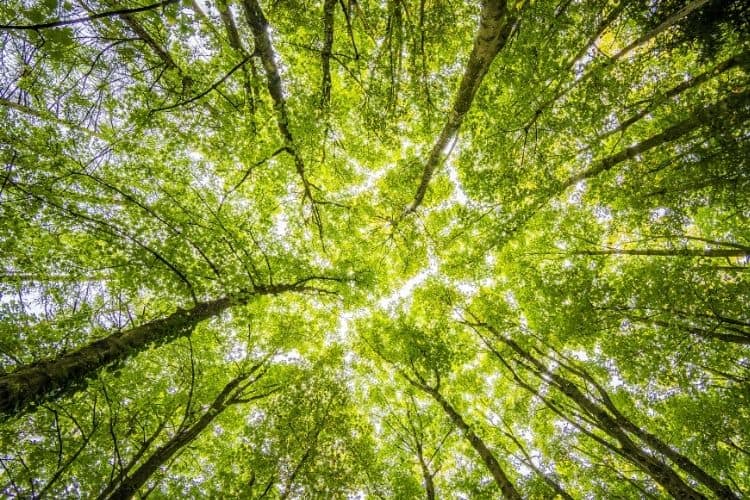
In botany (study of plants), trees are defined as perennial plants with an elongated trunk or stem which supports leaves and branches. But foresters call it a stand with their rugged stems and beautiful crowns.
“Yes, trees are the foundation of the forest, but a forest is much more than what we see,”
-Suzanne Simard
The web of roots supports the giant trunk of trees and allows them to smile in the biggest storm. A trunk is a fundamental part of a tree that extends from the roots and rises above carrying the weight of the canopy.
Small or big branches emerge at specific points of these trunks which spreads into several leaves.
Leaves are significant for collecting sunlight and converting it into energy through photosynthesis, respiration to feed and grow. And, they bloom and give fruits which are the means to continue generations.
These are the basic characters of what a tree would look like. But, every species varies in its characteristics. There are two main categories that all plants fit into Deciduous and Conifers (Evergreen) trees.
Deciduous Trees Versus Coniferous Trees
| Characters of comparison | Deciduous Trees | Coniferous Trees (evergreen) |
| Leaves | Broad leaves: bloom during spring and shed during the autumn season | The thin needle-like modified structure |
| Wood type | Hardwood; used to make furniture | Softwood; used to make paper |
| Weather for existence | Found in warmer regions | Found in colder regions especially in the Tundra region |
| Fruits and Flowers | Colorful fruits and flowers present | An absence of fruits and flowers, cones containing seeds produced |
| Shape of foliage | Trees growing outward thus broad foliage | Trees growing upward thus cone-shaped foliage |
| Leaves Shed | Leaves shed during the autumn season | Leaves are shed all year round and constantly replaced by new ones. |
5 Major Tree Identification Key
Tree identification is similar to the identification of our family members or friends; through their general characteristics. There are few key things to look at to distinguish common trees:
- Shape and sizes: Trees come in different shapes and sizes, from small spread to tall and thin. While some of them may have distinct shapes (Vase like the habit of an American elm tree or pyramid silhouette of a sweet gum).
- Leaves: Keep two leaves on the table and we can easily tell the deciduous and conifers. We are familiar with broad leaves of deciduous and needle-like leaves of conifers. But, the arrangement, shape, and leaf margin may vary with every species.
- Fruit: Fruit of conifers are distinct cone-shaped which varies from the colorful fruits of other species.
- Bark: The texture and color of bark changes with the age of the tree.
- Leaves bud and twigs: Smooth or hairy texture of twigs can help us identify the trees.
Top 10 Countries with Highest Tree Species
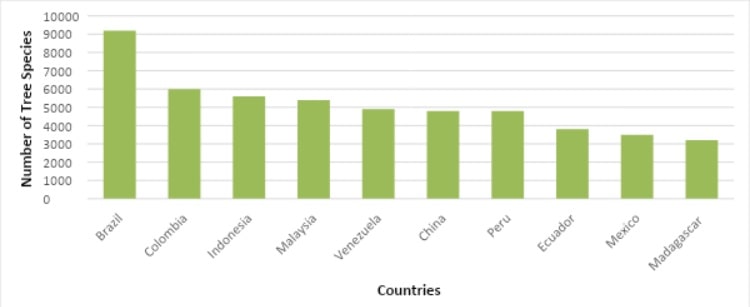
Fig 2: Ten countries with most trees species (Source: Beech et al., 2017)
10 Common Forestry Tree Types in the World
Walnut Trees (Juglans sp):
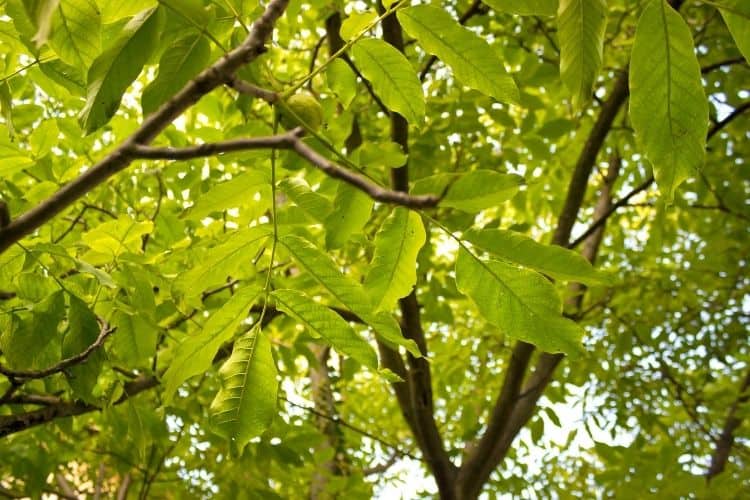
- Distribution: Walnut trees are native to Europe, North America, Asia, and China. Of over 10 species (Black walnut, Brazilian walnut, Japanese walnut, Manchurian walnut), Juglans regia is the most common one.
- Uses: English walnut trees are famous for their nuts, which is the reason people in the UK started their cultivation. The seeds are a drupe and eaten fresh or dried. They are said to help lower the cholesterol level and shells used in treating blood poisoning. Black walnut is famous for timber which is fine with a decorative, wavy grain and used in furniture, car interiors, and door industry. Cultivated for a dye found in the fruit husks.
- Identification: Leaves comprise buds that can be mistaken for ash trees. But on ash trees, the buds are much darker. Leaf stems are unique for their almost heart shape. Nuts look like a cross between a crab apple and lime.
Oak Trees (Quercus sp.)
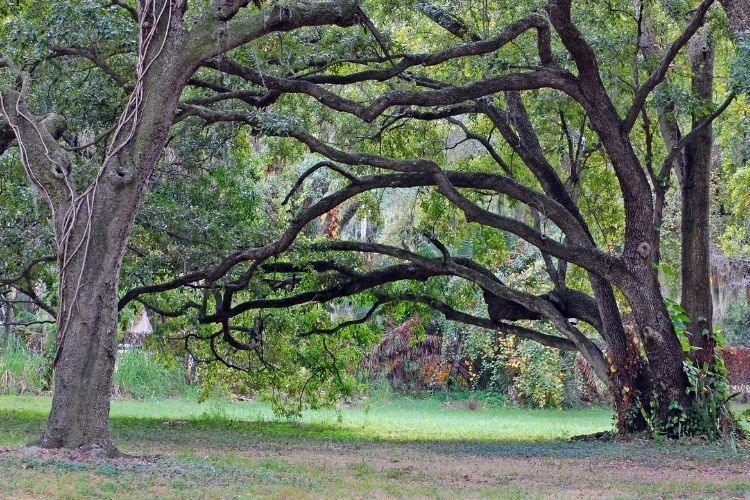
- Distribution: Oak trees are one of the most common trees in the Northern Hemisphere and include both deciduous and evergreen tree types. They are available from cool temperatures to tropical latitudes in Asia and America.
- Uses: They are one of the preferred tree types for furniture including chairs, tables, doors, and even floors. Woods of oaks are even used in musical instruments. Acorns are used in some food and beverages. There are dozens of Oaktree varieties, but its two main categories are white oak trees and Red (Black oak) trees.
- Identification: If you look at the leaves of White oaks, it is round and smooth. A low level of tannin in acorns makes it taste sweet. The bark of the trees is whitish gray. Black (red oak) has pointed leaves and acorns are bitter. The bark of red oak is darker. Common red oaks include willow oak, Japanese evergreen oak, Water oak, Pin oak.
Related reads:
Pine Trees (Pinus sp)
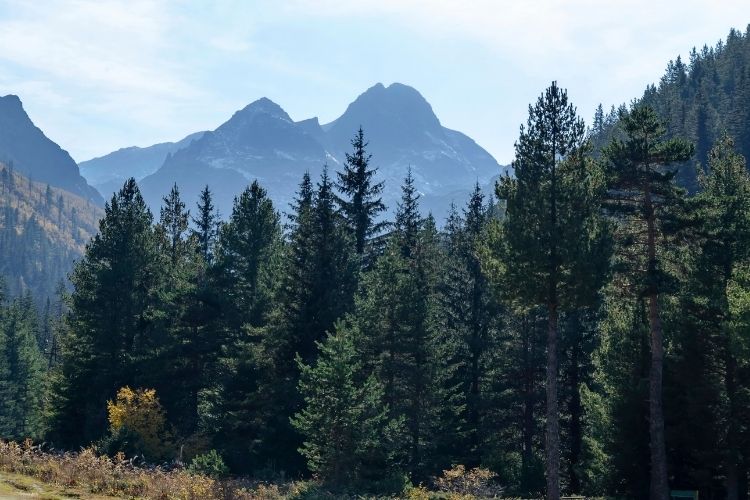
- Distribution: Needle-leafed evergreen pine trees are another common tree type found extensively in the Northern hemisphere. Of over 120 species in the genus Pinus, pine trees are most commonly found throughout Canada, Europe, and the Asian region.
- Uses: These are softwood but categorized as soft pine and hard pine based on the toughness of timber. Pine trees are the chief economic raw material in the construction and paper industries. Along with that, they are a source of turpentine, rosin, oils, and wood tars. They are priced for ornamental and medicinal values as well.
- Identification: Needle-like leaves are a major source for you to identify pine trees. Brown or gray barks and seeds bearing cones add another key to identification.
Maple Tree (Acer sp)
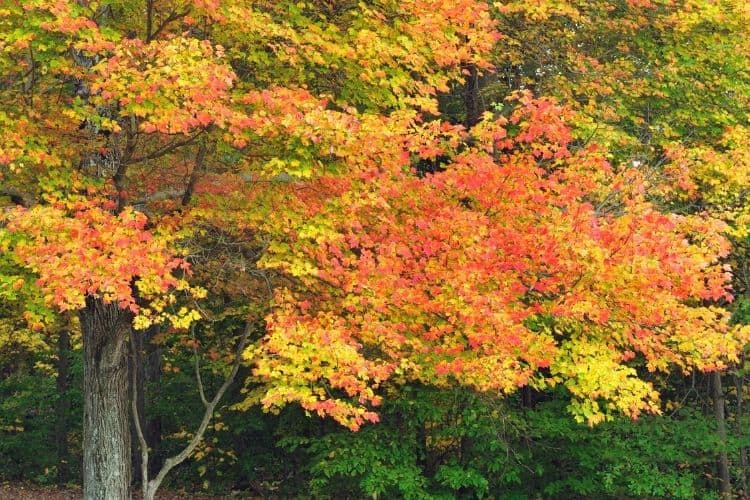
- Distribution: The maple tree is a beautiful deciduous tree most commonly associated with Canada- we see a maple leaf on a Canadian flag. There are over 120 species, most of them are native to Asia and widely distributed in Northern Temperate Zone.
- Uses: Maple trees, hardwoods, are the quality timber used in the industry of musical instruments and furniture for the production of baseball bats, bowling pins, and butcher’s blocks. Maple syrup is one of the priced products for pancakes and other desserts.
- Identification: Leaves of the Maple tree are distinct characters for identification. You’ll notice lobes at leaves and it changes color to red, yellow, and orange in the fall. The leaves are often mistaken with the leaves of sycamore. Generally, maple leaves have deep indentations while sycamore has shallow indentations.
Spruce Tree (Picea sp)
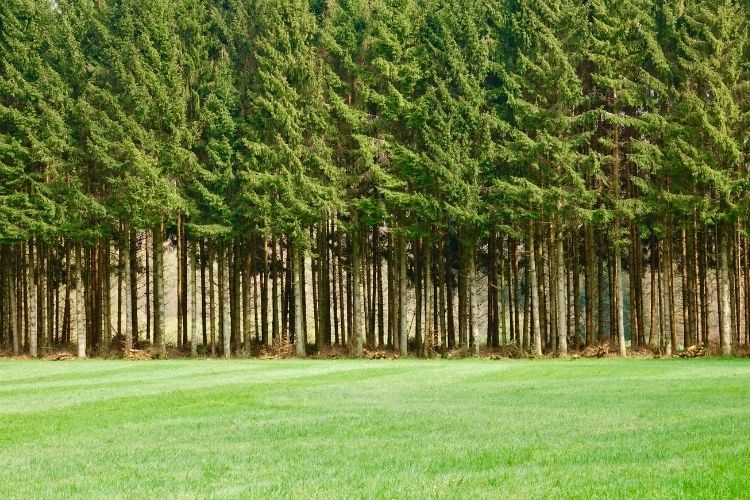
- Distribution: Spruce, a coniferous evergreen tree is found mostly in the Northern Temperate and Taiga region of the planet. Varieties of Spruce trees in these regions play a significant role in maintaining diversity.
- Uses: Long wood fiber quality of Spruce makes its economic value in paper industries. Colorado blue spruce is most commonly used as a Christmas tree for its symmetrical shape. Straight trunks of White spruce is preferred for landscape focal point. Woods of these trees are best used for the lumber industry, furniture, paneling, and doors.
- Identification: Mature spruce trees resemble that of fir. Looking up close, the needles of spruce are sharply pointed, square, and easy to roll between the fingers. On the other hand, fir needles are softer, flat, and cannot be rolled.
Birch Tree (Betula sp)
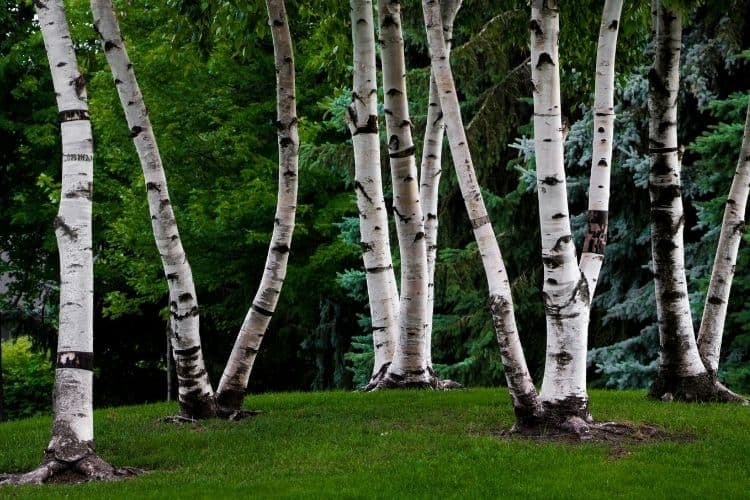
- Distribution: Birch is flowering medium-sized deciduous trees that make an impact on the winter landscape. Among 60 species of Birch trees, 18 are native to North America alone.
- Uses: The hardy, quick-growing, and relatively disease and insect resistance quality of the tree increase its value as wood. Good colored birch wood is used for flooring, furniture, interior finishing, plywood, and turnery.
- Identification: You can identify a birch tree by looking at its leaves shape and bark. On peeling the bark, it gives white, gray, or yellow color. If you look at its leaves, they are typically triangular with jagged-looking edges.
Check out how Birch compares to other trees:
Poplar Tree/ Cottonwood (Populus sp)
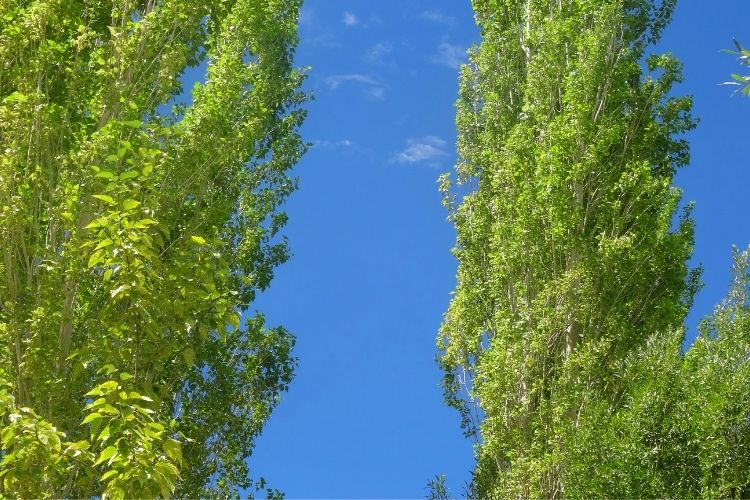
- Distribution: Poplar trees, native to Northern Hemisphere are generally divided into three groups: the cottonwoods, the aspens, and the balsam poplars. If you are looking for a tree for its aesthetic purpose then poplars can be the one with its short life span.
- Uses: The woods of poplars are soft, which is the reason for using it to make cardboard boxes, crates, paper, and veneer. Aromatic resinous buds of balsam poplar are used to make ointments.
- Identification: Poplar trees are distinct with their leaves. You’ll see a triangular, coarse-edged leaf with the flower on catkins present in poplar trees. Silvery-white undersides of leaves give a shimmering appearance in the breeze.
Bamboo (Bambusoideae sp)

- Distribution: If you’ve ever seen culms of treelike grasses attending a standard height, then you may be looking at bamboo trees. Tall tree-like grasses of the Poaceae family, bamboo are distributed in tropical and subtropical to mild temperate regions.
- Uses: Young shoots of some bamboos are weak and can be eaten as a vegetable. Bamboos are known for its varieties of purposes. You might need bamboo during building construction as scaffolding, stems are split up to make baskets. People of Asia use bamboo leaves for livestock, garden stakes, and ornamentals in landscape design. You can also use small bamboo plants as home décor.
Willow Trees (Salix sp)
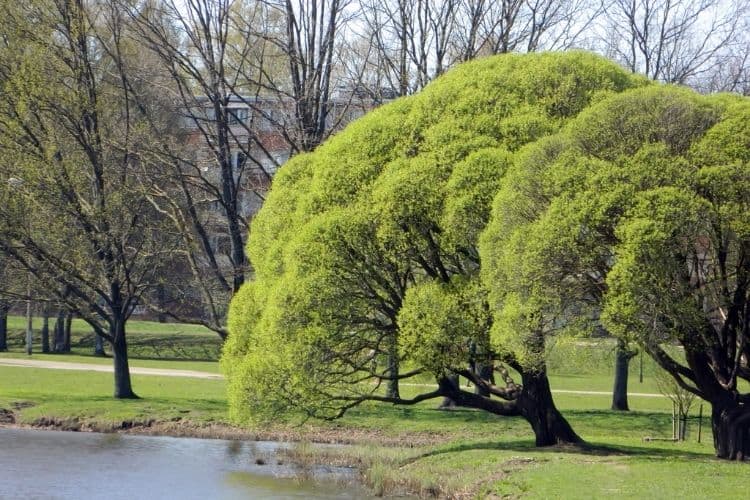
- Distribution: Willow is a deciduous tree also known as osiers and sallows. It’s the symbol of fertility and new life. Over 400 species of willow trees are distributed throughout the Northern Hemisphere.
- Uses: Willows are technically hardwood, but the wood itself is soft and wet. This makes willow a perfect raw material for the manufacture of boxes, brooms, cricket bats, boards, and other furniture. Fiber, paper, ropes, and string are other uses of willow trees.
- Identification: These trees are mostly identified by their lance-shaped leaves. The weeping willow is mostly recognized by its dramatically drooping branches which often touch the ground. While in pussy willow, you’ll notice fuzzy catkins.
Alder Trees (Alnus sp)
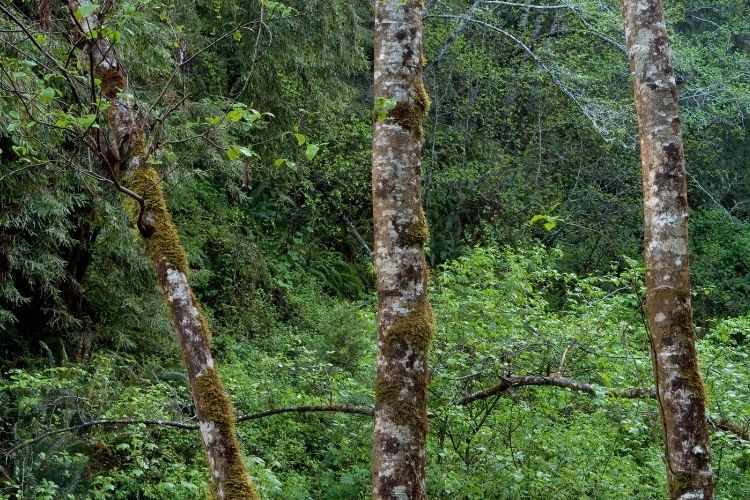
- Distribution: Alder is a deciduous tree of genus Alnus comprising 35 other species. Their distribution is throughout the Northern Hemisphere of the planet. They are regarded as the goddess tree.
- Uses: Alder trees are good for their ornamental purpose. In addition to that, fine-textured wood of alder is useful for furniture, cabinetry, and charcoal manufacture and millwork. The timber of Red and European alders are of good price.
- Identification: If you see any fruiting body like inch-long cones, then that may be the strobiles of alder trees. They also have brown-purple twigs of orange markings. You can also spot an orange-brown drooping flower in the tree.
Last Words on Tree Types
Using the above-mentioned keys, you’ll be able to differentiate the common tree species. Apart from these 10 trees, there are several other trees distributed worldwide.
Other beautiful trees may include; Larch, Elm, Fir, Sycamore, Cedar, Juniper, Palms, Rhododendron, Basswood, Linden, Sweetgum, and many more. But these are not as common forestry tree types as are those mentioned above.
What Quality of Trees Determines a Good Timber?
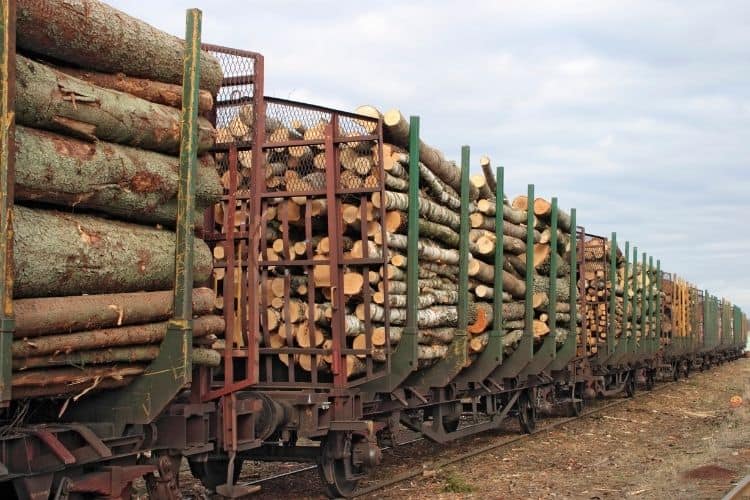
There are numerous considerations to be done before selecting a tree for timber. However, for a layman like us, it will be difficult to dig under its molecular structure, chemical reactions, and whatnot. We’ve listed some of the general qualities that a tree must have to be a good timber:
- Straight trunk and no limb scars
- No damage to the base of trees
- Consistent growth
- Species
How to Choose the Quality Woods?
Everybody wants the product they are using to be of a good quality, that appears good and give a pleasant look. Along with that, it must fulfill its function well be that as a support system (beam, pillars), or furniture. Above all, it should be devoid of any defects or imperfections.
- Appearance: Freshly cut edge of timber gives shiny appearances
- Color: Dark color is more preferable
- Durability: Insect and disease resistant timber are high-quality timers and are durable
- Elasticity: The load-carrying capacity of wood should be good
- Fibers: Straight with compact and firm fibers have more strength
- Fire resistance: Denser woods have higher fire resistance
- Shape: High-quality timber will retain its shape
- Sound: Clear ringing sound is produced by high-quality timber when struck
- Strength: Should be able to withstand structural loads
Types of Woods
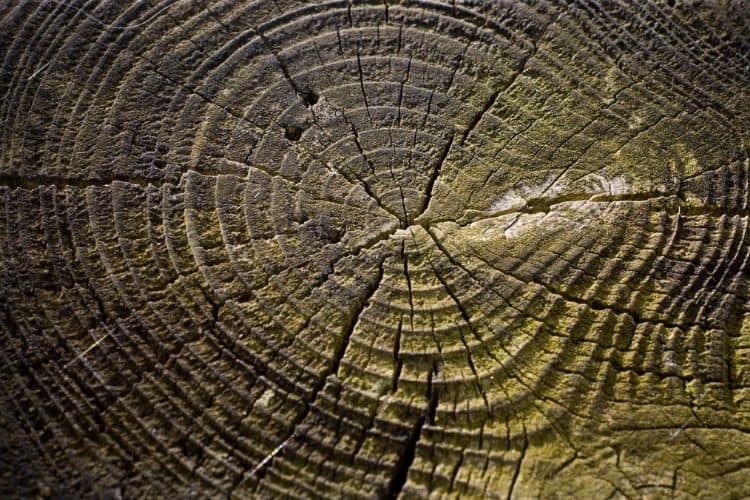
Before moving on to this topic, here is the meaning of some terms that will help you understand better;
- Heartwood: Dead inner section of the tree
- Sapwood: lighter, new, the outer section of the tree
- Growth rings: Each ring are believed to be a representation of each year of age
- Wood grains: Patterns made by tree fibers
Density is the determinant for the strength of woods. Strength and hardiness are the basis for determining the wood used in furniture. Hardwood and softwood are two major categories, most of the wood type fit into. Woods of flowering trees are hardwoods while conifers are softwoods.
Hardwoods vs Softwoods: The Difference
| Characters | Hardwoods | Softwoods |
| Tree Types | Hardwoods come from deciduous trees | Softwood comes from conifers |
| Texture | Have rough wood texture | Have fine wood texture |
| Vessels | The presence of vessels make it porous | Absence of vessels |
| Density | Most of the hardwoods have a higher density than softwoods. | Most softwoods have a lower density. |
| Growth | Hardwoods grow slower | Softwood grows faster |
| Fire resistance | Strong fire resistance | Poor fire resistance |
| Woodgrain | Close wood grains | Loose wood grains |
| Color | Generally darker than softwoods | Comparatively lighter |
| Price | More expensive than softwoods | Less expensive than hardwoods |
Pros and Cons of Various Hardwoods
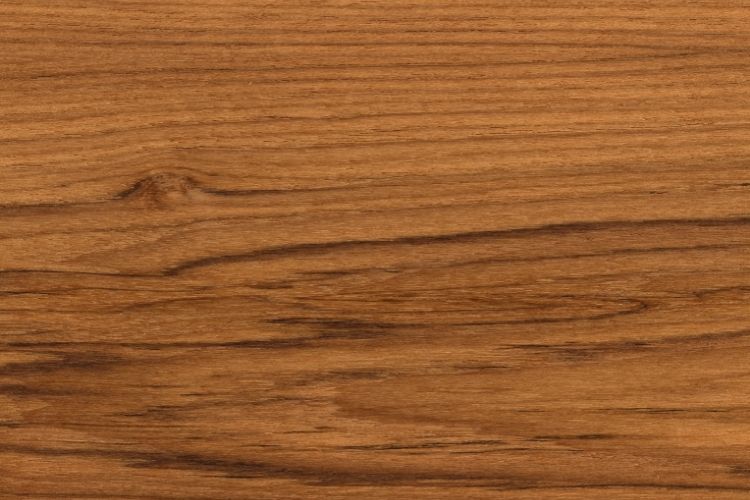
Teak wood
Uses: Boatbuilding, veneer, furniture, exterior construction, carving, and turnings
| Pros | Cons |
| Highly durable due to high natural oil and tight grain | More expensive than other hardwood so a problem in affordability |
| Easy to work with and extremely versatile | Slow growing timer- not so easily available |
| Resistance to rotting, termites, and acids | |
| Little maintenance | |
| Natural beauty |
Mahogany
Uses: High-end furniture, interior millwork, exterior doors, windows
| Pros | Cons |
| Extremely durable and long-lasting | Limited production |
| Comes in many color variant and have the attractive wood grain | Expensive |
| Water-resistant, Rot resistant | The color difference over time |
| No effect of changing weather (no shrinks and wraps) | |
| Hold paint and polishes well | |
| Easily available |
Ashwood
Uses: Flooring, millwork, boxes/crates, baseball bats
| Pros | Cons |
| Straight grain and light brown hue appearance | Open grain |
| Relatively dense with good workability | Not weather resistance |
| Shock resistance | Not suitable for polishing |
| Minimal Maintenance | Not very much durable |
| Easy processing |
Oaks wood
Uses: Furniture, cabinets, molding, trim, flooring
| Pros | Cons |
| Natural grain pattern | Prone to shatters and splinters if not handled properly |
| Heavy grade material, highly durable | Shrinkage and cracks can be a problem |
| Solid and economical choice | Stain can get darker and give a two-toned look |
| Easy processing into diverse shape | |
| Resistance to moisture and corrosion |
Cherry wood
Use: Fine furniture, flooring, cabinetry, veneer, musical instruments
| Pros | Cons |
| Rich in color, remain unstained | Sensitive to sunlight, can affect the color |
| Uniform, smooth texture, and straight grain | Expensive than other hardwoods |
| Resistant to decay and rot | Not water and moisture resistant so not appropriate for bathroom and/or laundry rooms |
| Resist shock load | Easily show dirt and dust |
| Awesome flexibility |
Pros and cons of Various Softwoods
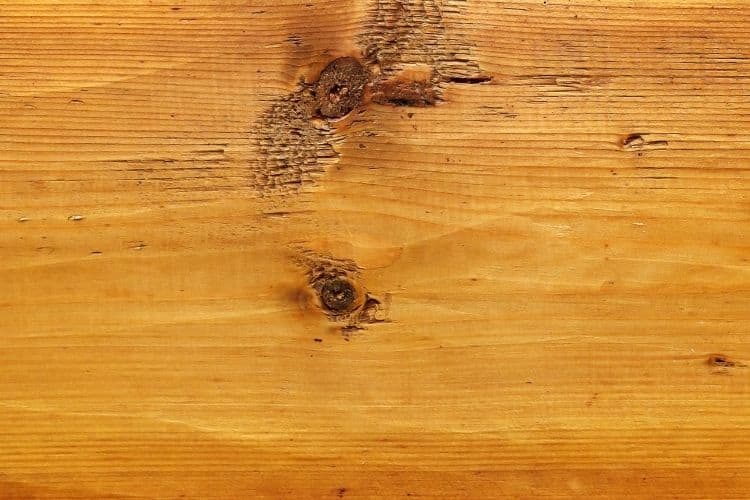
Pinewoods
Use: Fine furniture, flooring, cabinetry, veneer, musical instruments
| Pros | Cons |
| Long-lasting beauty | Often contain defects |
| Naturally grows faster, so, environmental sustainability | Presence of knots and knotholes |
| Good elasticity, and grain options | Susceptible to scratches |
| Lightweight | |
| Resists shrinking and swellings |
Fir Woods
Uses: Veneer, plywood, and construction lumber
| Pros | Cons |
| Stable even when constantly exposed to heat and moisture | High price than other softwoods |
| Straight grain and modern appearance | Can be easily damaged |
| Moisture, and decay resistance | |
| Superior strength |
Cedarwoods
Uses: Fence posts, closet, outdoor furniture, bows
| Pros | Cons |
| Good textured looks like real wood, perfect aroma | Expensive than other woods |
| Long-lasting and durable | Color fades over the year |
| Resistant to fading and staining | |
| Environmental friendly | |
| The perfect balance of strength and weight |
Spruce Woods
Uses: Pulpwood, construction lumber, joinery
| Pros | Cons |
| Affordable | Insect and decay susceptible |
| Bright colored appearance | Dull shine |
| Excellent striped grains | No weather resistance |
| Resinous wood | |
| Lightweight |
Larch Wood
Uses: Doors, frames, exterior cladding, and roof structures
| Pros | Cons |
| Insect, weather, and moisture resistant | Some weather condition can turn the wood |
| Fire resistance | Absence of rotation making difficult to work with |
| Elegant golden color | |
| Beautiful appearance | |
| Free from knots and defects |
Wood Processing
Just like every food cannot be eaten raw, we cannot just pull out the timber and use it. There is a certain transformation phase it must pass, these are the wood processing.
- Cutting and pruning: Winter cutting of trees have less sap and are more preferred. Chainsaw, hand saw, or ax can be used.
- Transport: trunks are transported by big Lorries.
- Removing the bark: Crucial and delicate process of peeling logs. Sawmills remove the bark by the chain of rollers with metal teeth.
- Sawing: Headrig saw cuts the log into planks. The optical sensor then measures the length and thickness.
- Drying: Dry woods last longer and resist decay. Woods are either air-dried or Kiln-dried.
- Planing: Planed woods are smooth around the edges and evenly flat.
- Quality check: Planks are graded according to the presence or absence of defects.
Video link:
Woodworking Tools
How about you made your study table or candle holder or a simple box, won’t that be exciting? So let’s discuss the basic woodworking tools that you as a beginner may need.
The DCS391B 20V MAX* 6-1/2-inch circular saw with a 6-1/2-inch carbide tipped blade operates on a powerful 5150 rpm motor with a 0 to 50-degree bevel capacity on a lightweight and durable magnesium shoe of the DEWALT 20V cordless circular saw.
This Brushless Cordless Random Orbital Sander provides the power and runtime needed to get the job done. A variable-speed dial provides ultimate speed control from 8,000 to 12,000 OPM for a variety of projects.
Strike stronger and extract nails quicker with the GreatNeck 8 oz. Steel curved claw hammer, the perfect hammer for around the house jobs. An oversized slip-resistant Hatchet handle helps set this claw hammer apart, allowing for a secure grasp while reducing vibration and fatigue.
Customize each cut with the SKIL 20V Cordless Jigsaw. This safe and easy-to-use cordless jigsaw is perfect for first-time DIYers and experienced pros alike.
Brushless motor of cordless drill combo kit delivers up to 57% more runtime over brushed. XR Lithium Ion batteries with fuel gauge in cordless tools combo kit provide 33% more capacity over standard packs.
Making wood surfaces perfectly flat, these jointers are extremely versatile. From beginners to woodwork hobbyists, owning a good quality jointer is something that is crucial for your DIY projects around home.
These router bits are tipped with precisely machined YG8 tungsten carbide blades to allow for clean and accurate cuts on all types of wood with excellent resistance to heat.
Top quality magnetic screwdriver set, 10 professional grade screwdrivers that are designed to serve a multitude of uses.
The DEWALT DW735 features a three-knife cutterhead and a powerful 15 amp motor that delivers 10,000 rpm.
The protape auto rewind is a heavy duty tape measure constructed for professional use. It features an aircraft aluminum case with handy brake, and swivel belt clip for convenience and ease of use.
Video link:
FAQs
Question: What Are The Most Common Trees in the United States?
Answer: Both Deciduous and Conifers are equally available in the United States based on geographical regions. Among deciduous tree types, there are Oak species, Maple species, sweetgum, and many more while among conifers, there are Fir species, Dogwood, Pine species, Spur species, and many more.
Question: Is There Any Wood Identification App?
Answer: There are several apps like MyWood ID, The wood solution species, Xylorix, I.D. wood app which can identify the type of timber/tree you’re looking at.
Question: What Is The Best Wood For Furniture?
Answer: Mostly used hardwoods for furniture include black berry, black walnut, maple and oak. While, the softwoods may include cedar or pine.
Question: How Can I Maintain The Outdoor Wood?
Answer: First and foremost, paint your wood to prevent pest and fungal infestation. Application of paint ease the cleaning process. Use water with mild soapy solution and a piece of cloth to clean your wood.
Conclusion
This article is an a-z explanation of trees. Whether you are planting a tree or wood enthusiast, this complete information will help you take the best step.
Hopefully, this article will be easy to questions like “How can I identify this tree?” or “Which tree best for furniture?” or “What are the common forestry tree types?” or “How can I make my DIY wood products?”
Continue reading related guides, reviews and comparisons:
- Firewood Storage Ideas and Solutions
- Pignut Hickory Tree Guide
- Blackjack Oak Tree Guide
- Virginia Pine Wood Uses
- Chestnut Oak Wood Uses
- Mulberry Wood Uses
- Where to Buy Firewood Online?
- Best Dark Hardwood for Furniture
- Quarter Sawn White Oak Uses
- Juniper Wood Uses
- Magnolia Wood Uses
- Persimmon Wood Uses
- Hackberry Wood Uses
- Norway Pine Tree Guide
- Box Elder Wood Uses
- Buckeye vs Chestnut Comparison
- Goby Walnut Tree Guide
- Elm wood Wood Uses
- Manzanita Wood Uses
- Catalpa Wood Uses
- Best Lumber for Rainy Weather
